Inside Truman Capote's legendary Black and White Ball, the 'party of the century' featured in 'Feud'
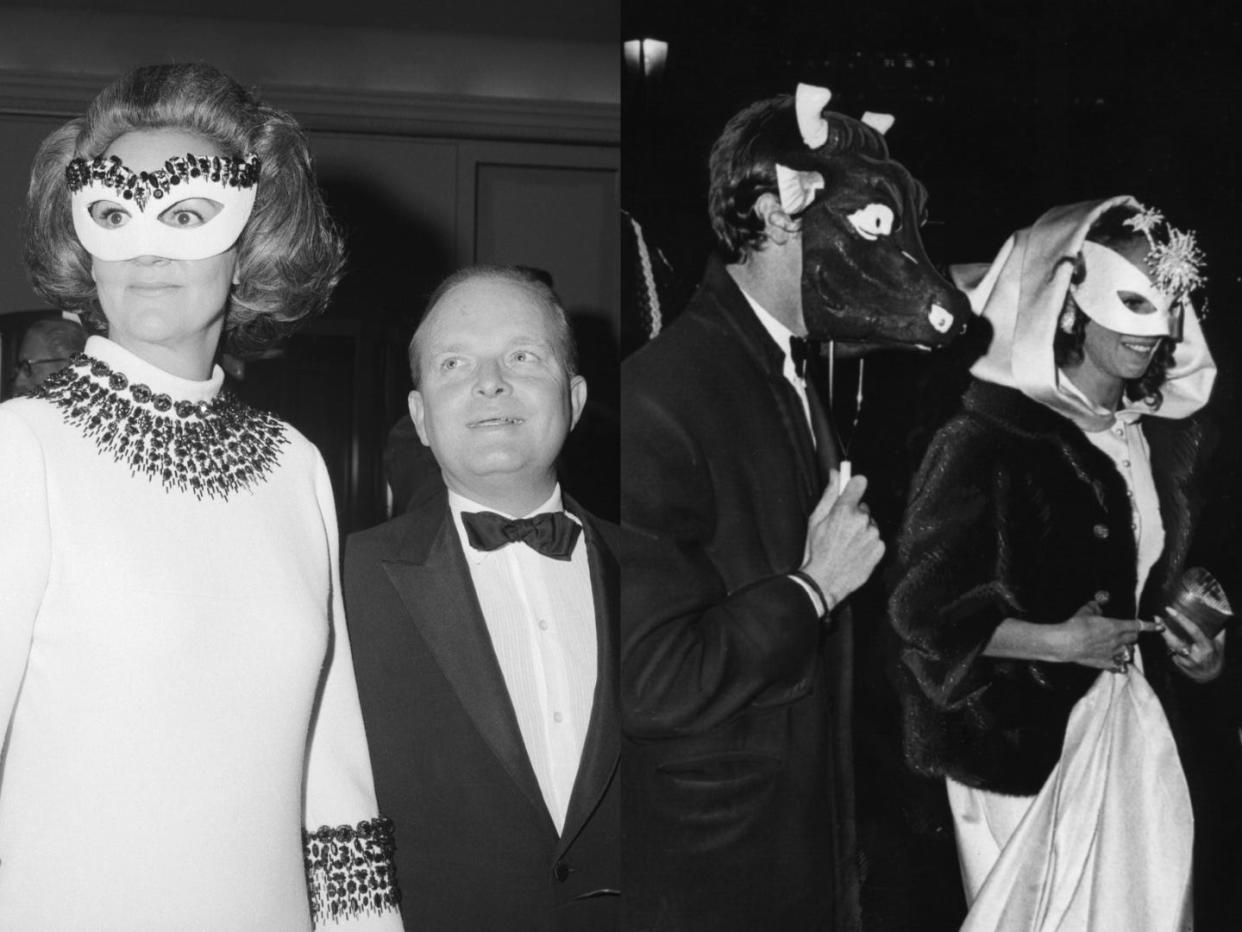
- Oops!Something went wrong.Please try again later.
In November 1966, Truman Capote held a masquerade ball at New York's Plaza Hotel.
It was attended by over 500 guests, including Frank Sinatra, Andy Warhol, and Edward VIII.
The legendary soirée is the focus of the third episode of "Feud: Capote vs. The Swans."
On November 28, 1966, Truman Capote threw what he called "a little masked ball" for 540 of his closest friends.
To the rest of the world, it was the "party of the century," a moniker it earned due to its extravagant and exclusive nature.
What Capote managed to achieve with the Black and White Ball remains truly singular; its opulence and envious guest list aside, thanks to Capote's connections and social standing, he was able to bring together a diverse and influential group of people in a way that hadn't ever been done before.
The planning, execution, and aftermath of the ball is examined in "Feud: Capote vs. The Swans" season two, episode three, titled "Masquerade 1966." Here's a look inside the real event.
The Black and White Ball was held at the Plaza Hotel in New York City on November 28, 1966.
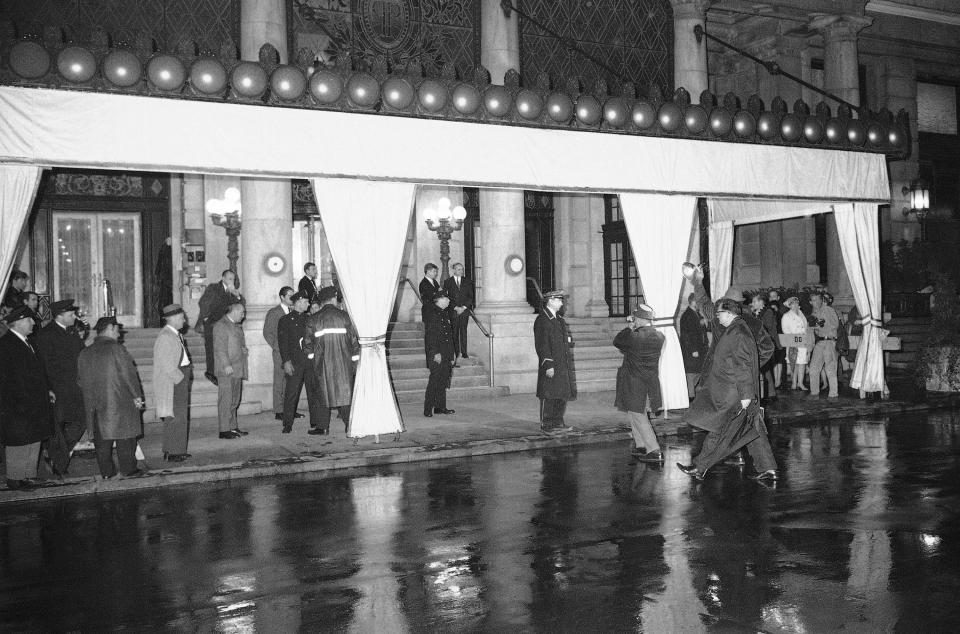
When Capote decided to throw his lavish party for the upper echelons of New York society, he was riding high from the commercial and critical success of "In Cold Blood," his 1966 "non-fiction novel" about the massacre of a Kansas family by two drifters, who were eventually given the death sentence.
According to Vanity Fair, after Capote had sold the paperback rights, movie rights, and foreign rights, among other things, he was left with a $2 million payday — ample financial resources to pull off a truly spectacular event, which reportedly cost him $16,000 (around $150,00 in 2024).
Capote threw the party in honor of Washington Post owner Katharine “Kay” Graham.
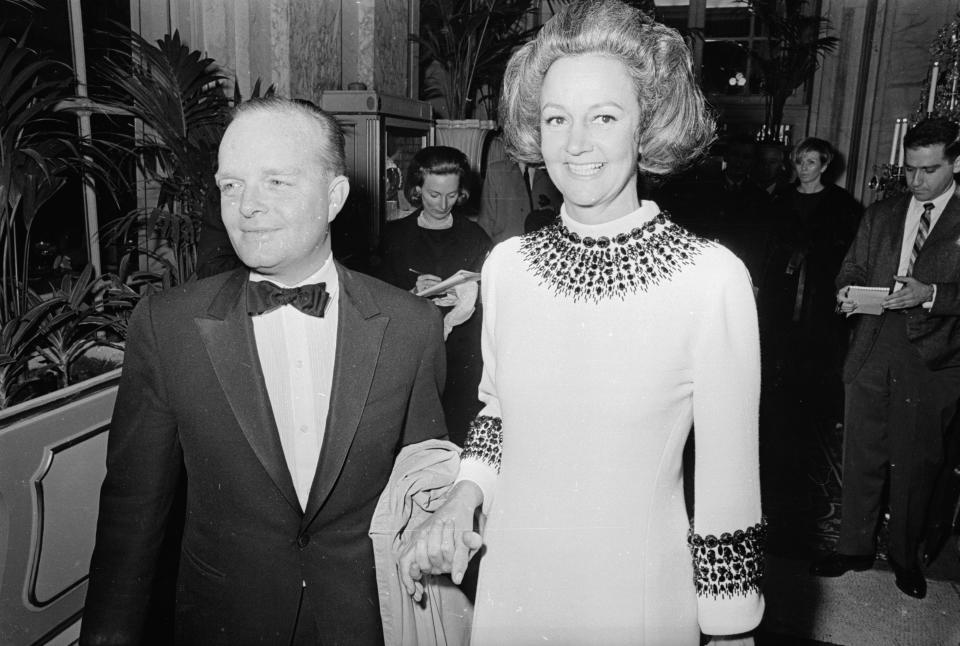
"Truman called me up that summer and said, 'I think you need cheering up. And I'm going to give you a ball,'" Graham recalled to Esquire in 1991.
At the time, Graham was just three years into her decadeslong role as the owner of The Washington Post, following the suicide of Phil Graham, her husband and the paper's former owner, in 1963.
In his biography of Capote, Gerald Clarke argued that in making Graham his honorary guest, Capote forever changed the reputation of Graham, whose life was dramatized in the 2017 film, "The Post."
"She was arguably the most powerful woman in the country, but still largely unknown outside Washington," Clarke wrote. "It would symbolize her emergence from her dead husband's shadow; she would become her own woman before the entire world.''
Many of Capote's "swans" attended the ball, including Lee Radziwill who was one of the few women he danced with during the evening.
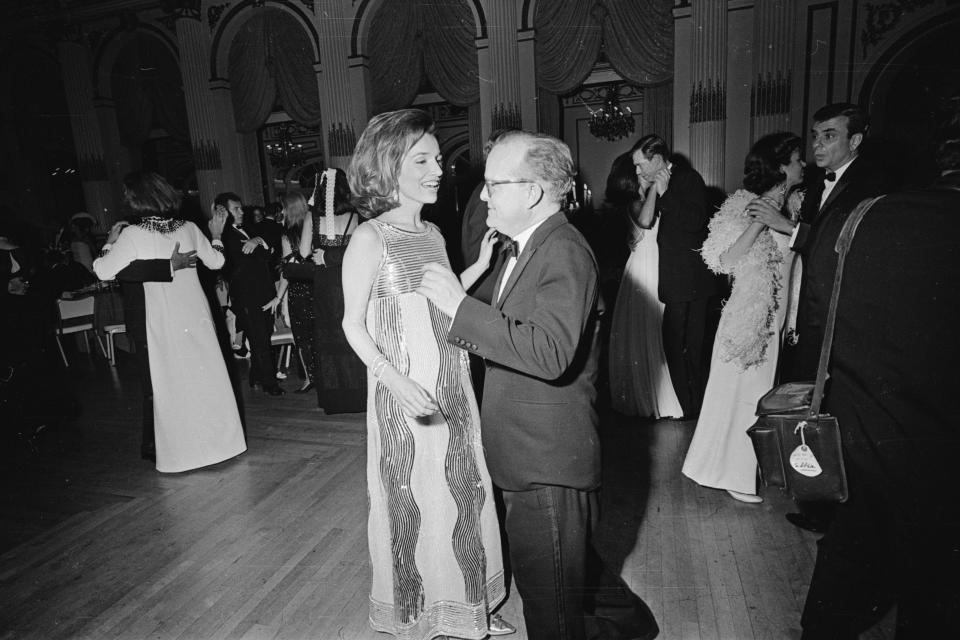
Per Vanity Fair, Radziwill commented that "dancing was not Truman's forte," and he only graced the dance floor for herself, Graham, and famed actor Lauren Bacall.
Many of Capote's other close socialite friends, whom he dubbed his "swans" — and whom he would go on to betray in his famous Esquire article, "La Côte Basque, 1965" — were there too.
These included C.Z. Guest, Slim Keith, and Babe Paley, the latter of whom had been the one to introduce Capote to Graham five years earlier.
The official invite for the event requested that men wear black masks and women wear white masks.
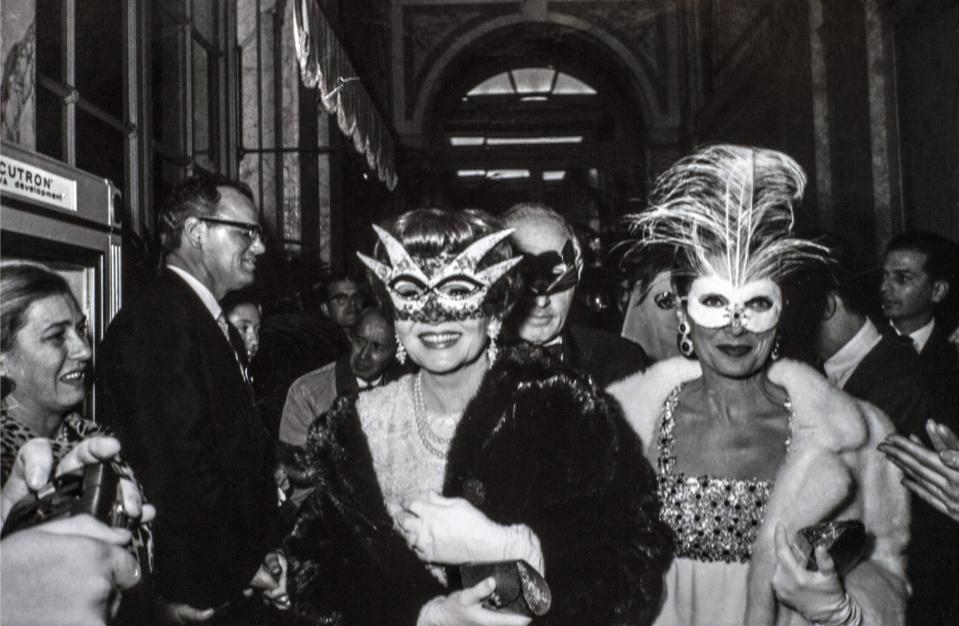
In invitations sent to guests the month before the ball, Capote asked attendees to wear monochrome attire. Men, it said, were to dress in black tie and black masks. Women, meanwhile, should wear a black or white dress and accessorize a white mask or fan.
According to Vanity Fair, Capote wanted his guests to only remove their disguises once the clock struck midnight, two hours into the party. The idea, it seems, was that he wanted his guests — who came from a number of different social spheres — to feel liberated to mingle with each other without feeling societal pressure to only speak to those they deemed appropriate.
Capote's dress code sent his female guests to dressmakers in droves, all looking for new, glamorous outfits that would impress their fellow partygoers.
Designers such as Adolfo and Halston were among those called up to design unique masks for the attendees. Per Women's Wear Daily, some paid upwards of $600 for their masks. Capote's own cost just 39 cents.
Capote spent months curating the guest list, which ended up exceeding 500 people.

According to several people who spent time with Capote in the months preceding the ball, he spent months reworking his guest list in a small black-and-white composition book.
Among them were names from the world of politics, such as Lady Bird Johnson and Sargent Shriver, Hollywood stars, including Mia Farrow and Henry Fonda, and royalty like Edward VIII and Wallis Simpson.
Andy Warhol, Frank Sinatra, Norman Mailer, and Sammy Davis Jr. were also among those who made the cut.
But not everyone on the list was a recognizable name; Capote also invited several people he owed the success of "In Cold Blood" to, such as the town doctor, a local banker, and the judge's widow, all of whom flew in from Kansas.
Still, Capote caused upset among those who weren't invited to the lavish event.
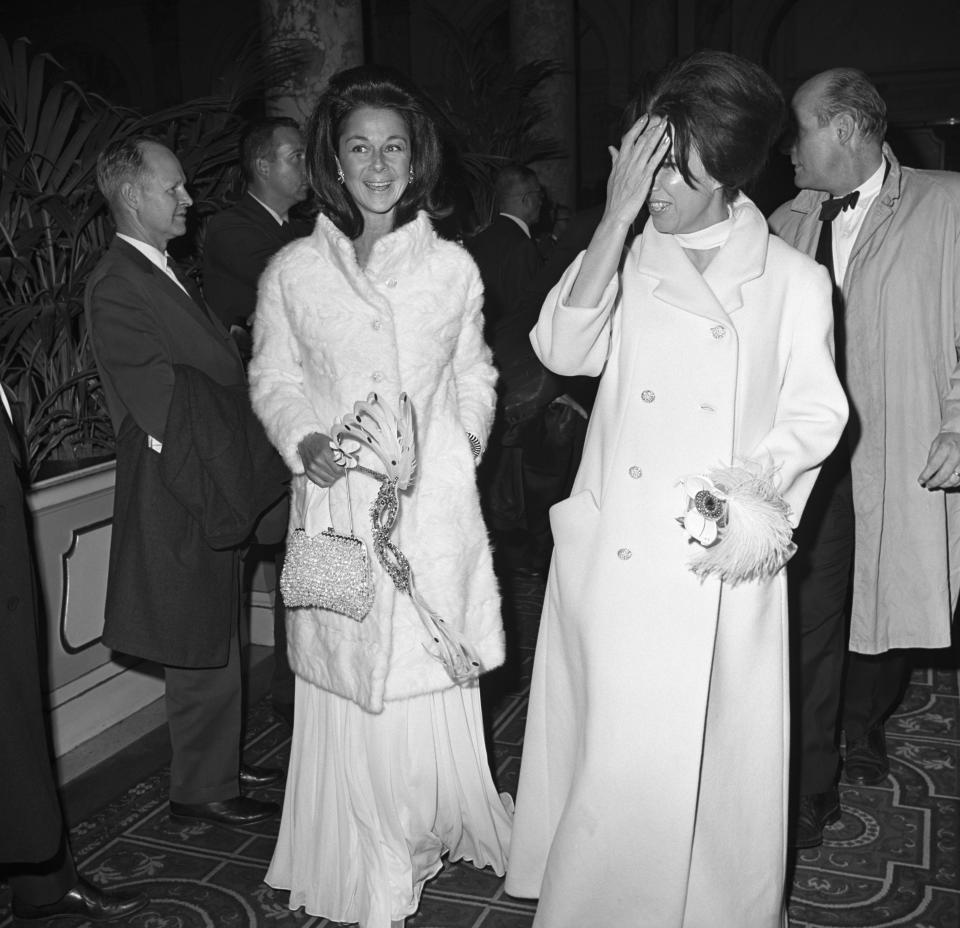
The guest list originally featured 480 names, according to Vanity Fair. However, as the day of the ball approached, the number grew to 540, dangerously close to the Plaza's grand ballroom's 550-person capacity.
But even that wasn't enough to make everyone happy; Capote excluded several people from his guest list, including critics who had given him bad reviews and actors who he just didn't think passed muster. One starlet, Tallulah Bankhead, was successful in convincing Capote to extend her a last-minute invitation. Others were not.
"It was devastating if you weren't invited," Deborah Davis, author of "Party of the Century," told The New York Post in 2016.
"He totally angered some people. He'd say, 'Honey, maybe I'll invite you and maybe I won't.' Some people even offered money, and that never worked."
The party is to this day remembered as one of the most iconic social events of the 20th century.
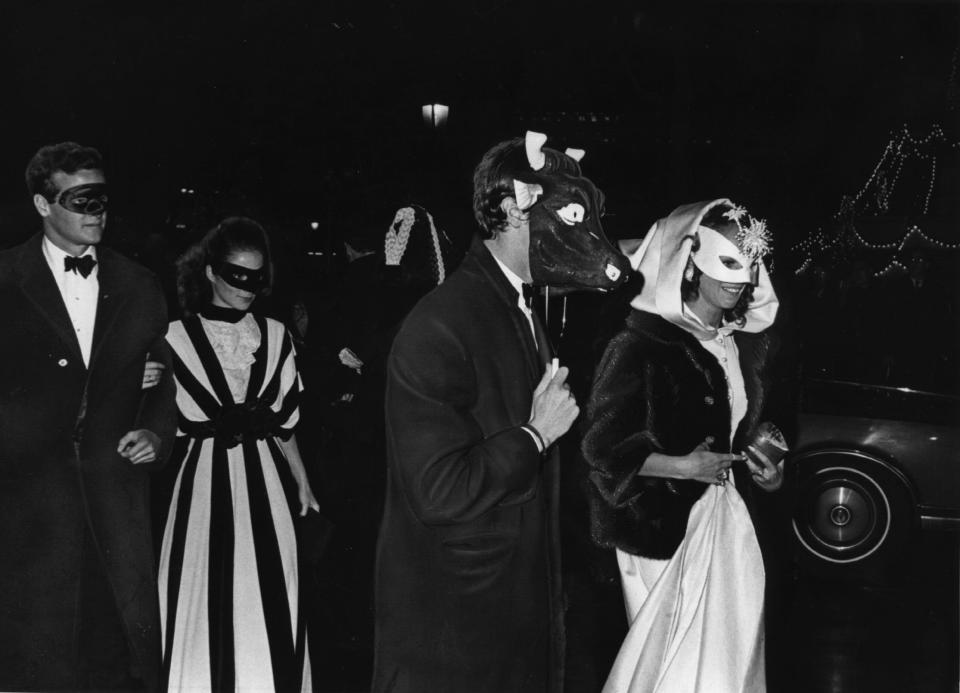
It didn't even take until the next day for average Americans, who hitherto did not know about the ball, to be exposed to its grandeur.
Likely because William Paley, the founder of CBS and husband of Capote's good friend Babe Paley, was in attendance, his network aired live coverage of the party on its evening news.
The New York Post and the New York World Journal Tribune were among the newspapers that gave the ball front-page coverage the next morning. The New York Times printed its guest list, a tradition previously reserved mainly for White House dinners.
Women's Wear Daily rated the attendees' ensembles on a system of stars, with Gloria Guinness and Marella Agnelli among those who earned the top scores; Norman Mailer was considered the worst-dressed by the outlet.
On the 50th anniversary of the party in 2016, The New York Times wrote of the ball's legacy: "In many ways, the Black and White Ball served as a signpost pointing the way to Kardashia, that mythical land where accomplishment is largely optional and fame is an end unto itself. And it also served to help blur forever the lines separating public from private."
"Feud: Capote vs. The Swans" airs Wednesdays at 10 p.m. ET on FX.
Read the original article on Business Insider

